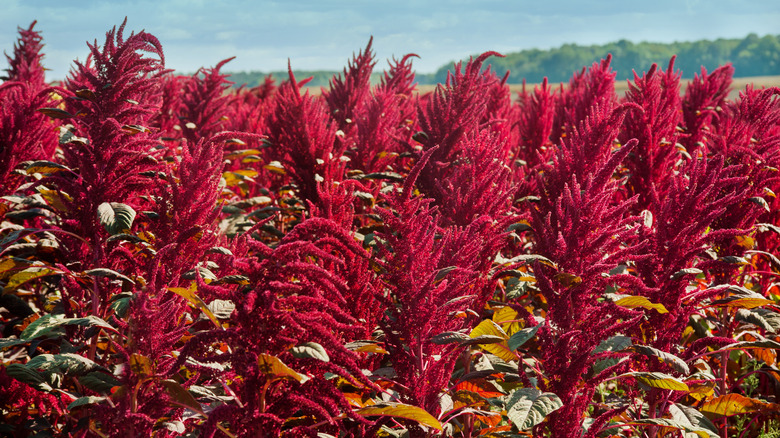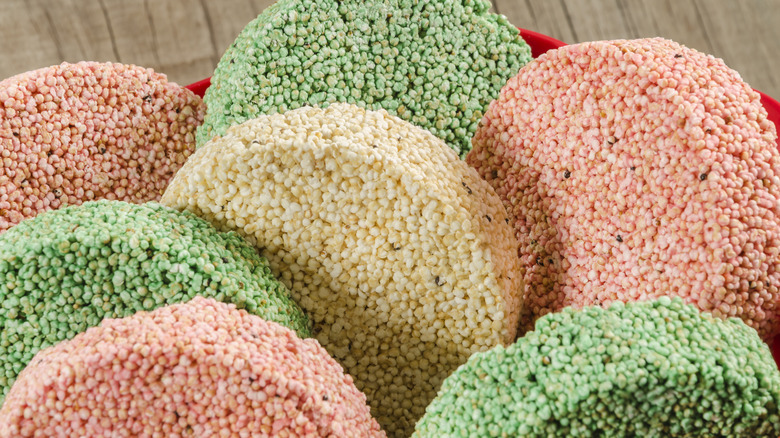The Secret Ingredient To Boost The Protein In Your Tuna Patties
Tuna has long been a staple of bodybuilders for its high protein content, as there are 40 grams per can, via Bodybuilding. Tuna patties are a tasty option when you are tired of canned tuna and egg whites. Why bump up the protein? Because it's a fantastic opportunity to eat more amaranth. Food blog Green Healthy Eating reminded us of this super "pseudocereal" we probably don't eat enough. Pseudocereals, like amaranth, teff, and quinoa, to name a few, are seeds that we use like grains. They're generally gluten-free, high in protein, and contain all the benefits of whole grains. They are high in fiber and nutrients, promote healthy digestion, are anti-inflammatory, and reduce the risk of many diseases, including cancer and diabetes (per Healthline). Not a bad extra ingredient for your tuna, right?
Amaranth has been found in archeological sites throughout the Americas, dating back over 7000 years. It was cultivated by the Aztecs, along with beans and corn. Though it seems amaranth was more often used as a ceremonial food than for general consumption. Whole Grains Council shares this account of the rites performed by the Aztecs for their god of war, Huitzilopochtli. Amaranth was mixed with honey and formed into a likeness of the deity. After a ritual human sacrifice, the amaranth statue was broken apart and fed to the attendees (per Whole Grains Council). Alegria candy, confections of amaranth, and honey are still sold in Mexican markets today (per "Eating Traditional foods: Politics, Identity, and Practices").
Amaranth History and Uses
According to the Guardian's equally grisly account, in the 16th century, Spanish conquistadors outlawed the cultivation of amaranth. They threatened to cut off the hands of anyone growing it because it was linked to the indigenous people's earth-based spiritual beliefs that threatened their efforts to convert them to Christianity.
On a more palatable note, amaranth works in both sweet and savory dishes. It's great in a buddha bowl, pops like popcorn, or try using amaranth instead of rice in pilaf as a gluten-free side dish. You can also eat the leaves! Organic authority calls it the new kale. Eat them raw in salads or cooked in any dish that calls for a dark leafy veggie (perTheBlufufu). Last but not least, it's easy to grow. Amaranth grows to eight feet tall with billowing red or white flowers. The leaves can be continually harvested, and the flowers will yield more than one seed harvest (per Veggie Harvest). Dr. Rob Myers, a plant scientist at the University of Missouri, tells the Whole Grain Council that because of its drought tolerance and ability to adapt to various climates and elevations, amaranth is high on the list of best foods to grow as we see hotter temperatures and possible food and water shortages. Good for the Earth, and good for your macros: amaranth has it all!

